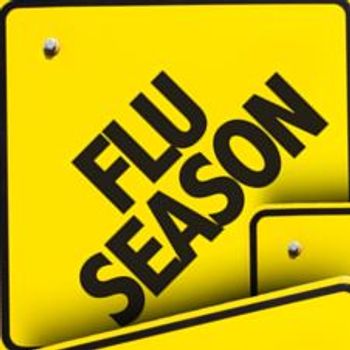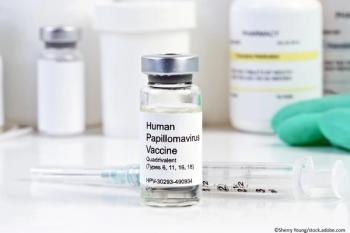
Influenza Season: 2010 Vaccines
This year's influenza season is approaching fast. Although the World Health Organization officially declared an end to the 2009 H1N1 influenza pandemic in August, the H1N1 virus is still circulating and is likely to continue to cause serious disease in infants, young children, pregnant women, and other high-risk groups.
This year's influenza season is approaching fast. Although the World Health Organization officially declared an end to the 2009 H1N1 influenza pandemic in August,1 the H1N1 virus is still circulating and is likely to continue to cause serious disease in infants, young children, pregnant women, and other high-risk groups.
The H1N1 virus is one of 3 viruses covered by this year's vaccine. The others are A/Perth/16/2009 (H3N2)-like and B/Brisbane/60/2008-like strains.
WHAT'S NEW IN THE 2010 VACCINATION GUIDELINES
The 2010 guidelines on influenza vaccination from the CDC's Advisory Committee on Immunization Practices contain several notable changes from the 2009 recommendations2:
A LOOK BACK AT THE H1N1 INFLUENZA PANDEMIC
In April 2009, respiratory disease caused by a novel influenza A (H1N1) virus first appeared in North America and then rapidly spread to other areas of the world. Morbidity associated with pandemic H1N1 influenza remained above seasonal baselines throughout the spring and summer of 2009. During the peak of influenza activity in the United States, more than 99% of viruses identified were the 2009 pandemic influenza A (H1N1) virus.2
H1N1 influenza is expected to continue to occur during future winter influenza seasons in the northern and southern hemispheres, but whether 2009 pandemic influenza A (H1N1) viruses will replace or co-circulate with 1 or more of the 2 seasonal influenza A virus subtypes (seasonal H1N1 and H3N2) that have co-circulated since 1977 remains unknown.2
PERSONS AT GREATEST RISK FOR INFLUENZA COMPLICATIONS
The risks of influenza-related complications, hospitalizations, and death are increased in persons aged 65 years and older, infants and young children, and persons with underlying medical conditions. Although complications of influenza are generally rare among healthy young adults, pregnant women are also at increased risk.
The incidence of influenza complications among adults aged 19 to 64 years who had 2009 pandemic influenza A (H1N1) was greater than is typically seen with seasonal influenza. In a study that focused on the outbreak in Mexico, almost 87% of deaths and 71% of cases of severe pneumonia occurred in patients between the ages of 5 and 59 years.4
Among the significant complications that can occur after influenza are5:
WHEN TO GIVE THE VACCINE
Annual vaccination is the most effective method for the prevention of influenza and its complications. Influenza vaccine is recommended for all persons aged 6 months and older who do not have contraindications to vaccination. Trivalent inactivated influenza vaccine (TIV) can be used for any person aged 6 months and older, including those with high-risk conditions (
Start offering the influenza vaccine soon after it becomes available and if possible by October. Continue vaccination efforts throughout the fall and winter because the duration of the influenza season varies and the disease may not appear in certain communities until February or March. Vaccine administered in December or later, even if influenza activity has already begun, is likely to be beneficial during most influenza seasons. The majority of adults have antibody protection against influenza virus infection within 2 weeks after vaccination.2
Give 2 doses of vaccine to all children aged 6 months to 8 years who are receiving seasonal influenza vaccine for the first time or whose vaccine history is unknown. Children in this age-group who received only 1 dose of seasonal vaccine during the 2009 to 2010 season should receive 2 doses, rather than 1, during the 2010 to 2011 season. In addition, children aged 6 months to 8 years who did not receive at least 1 dose of an influenza A (H1N1) 2009 monovalent vaccine should receive 2 doses of a 2010 to 2011 seasonal influenza vaccine, regardless of previous influenza vaccination history. For all children, the second dose of a recommended 2-dose series should be administered at least 4 weeks after the initial dose.2
ANTIVIRAL AGENTS
Although antiviral agents should not be used as a substitute for influenza vaccination, these drugs can be a useful adjunct. Antiviral medications can be used for chemoprophylaxis and have been demonstrated to prevent influenza illness. When used for treatment, antiviral agents can reduce the severity and duration of illness, particularly if they are given within the first 48 hours after the onset of symptoms.2
References:
REFERENCES:
1.
World Health Organization. H1N1 in post-pandemic period.
http://www.who.int/mediacentre/news/statements/2010/h1n1_vpc_20100810/en/index.html
. Accessed September 22, 2010.
2.
Prevention and control of influenza with vaccines: recommendations of the Advisory Committee on Immunization Practices (ACIP), 2010.
MMWR
. 2010;59(RR-08):1-62.
3.
Update: recommendations of the Advisory Committee on Immunization Practices (ACIP) regarding use of CSL Seasonal Influenza Vaccine (Afluria) in the United States during 2010-11.
MMWR
. 2010;59(31):989-992.
4.
Chowell G, Bertozzi SM, Colchero MA, et al. Severe respiratory disease concurrent with the circulation of H1N1 influenza.
N Engl J Med
. 2009; 361:674-679.
5.
Centers for Disease Control and Prevention (CDC). Interim Guidance for Clinicians on Identifying and Caring for Patients with Swine-origin Influenza A (H1N1) Virus Infection.
http://www.cdc.gov/h1n1flu/identifyingpatients.htm
. Accessed September 22, 2010.
Newsletter
Enhance your clinical practice with the Patient Care newsletter, offering the latest evidence-based guidelines, diagnostic insights, and treatment strategies for primary care physicians.


















































































































































































































































































